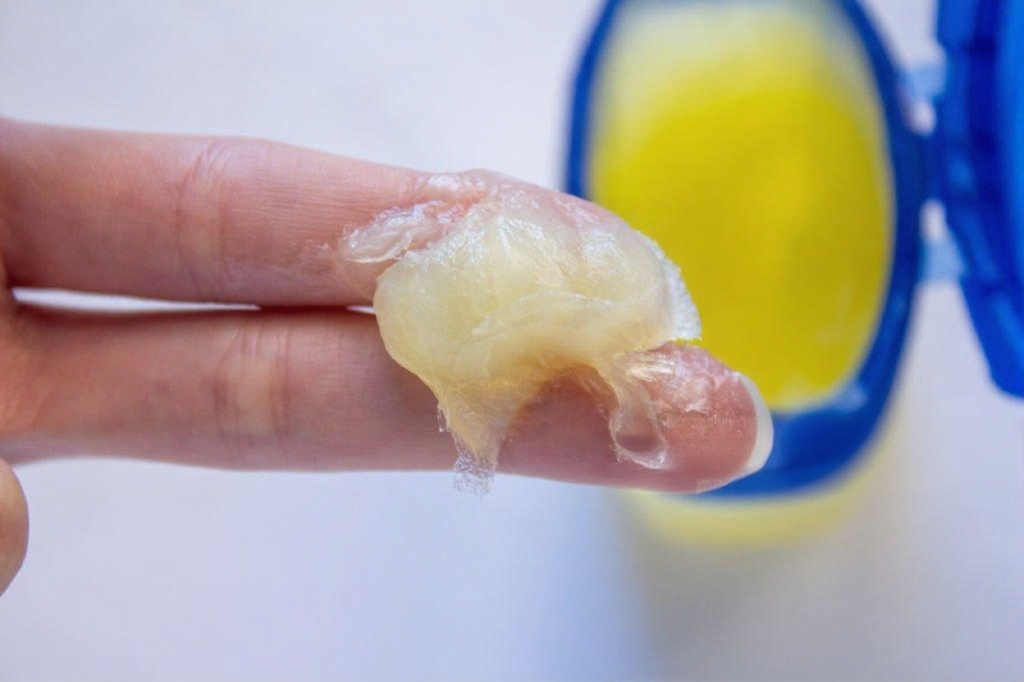If you've got an IUD and you're wondering whether it's affecting your vaginal health, you're definitely not alone. Maybe you've heard conflicting info about IUDs and bacterial vaginosis (BV), or perhaps you've noticed some changes since getting your device. Here's the deal: the relationship between IUDs and BV is way more nuanced than most people realize.
BV happens when the bacterial balance in your vagina gets thrown off. Understanding what BV is, its symptoms, and underlying causes gives you the foundation for exploring how your contraceptive choice might be affecting your vaginal ecosystem. Emerging research suggests that certain types of IUDs might have specific effects on your vaginal microbiota.
Let's dive into what current research tells us about IUDs and BV, break down the differences between copper and hormonal devices, and give you practical strategies for keeping your vaginal health on point.
What's the Deal with Different IUD Types and BV?
Understanding the two main categories of IUDs is crucial for grasping how they might affect your vaginal health. Each type works completely differently and may influence your vaginal environment through distinct mechanisms.
Copper IUDs: The Non-Hormonal Player
Copper IUDs (like the Paragard) release small amounts of copper ions that basically make your uterus a hostile environment for sperm. These devices can stay effective for up to 10 years, which is pretty impressive. But here's where things get interesting.
Research published in the Clinical Infectious Diseases [1] found that copper IUD users experienced a 1.28-fold higher risk of bacterial vaginosis compared to women using other non-hormonal contraceptive methods. That's not a small difference.
A comprehensive study that followed 2,585 women for up to 33 months revealed some pretty significant findings [1]. BV frequency was highest among copper IUD users, clocking in at 153.6 episodes per 100 person-years. Even more concerning? The elevated BV risk didn't just happen initially; it stuck around throughout copper IUD use, remaining 1.52-fold higher even after 18 months.
Hormonal IUDs: A Completely Different Story
Hormonal IUDs (think Mirena, Skyla, and Liletta) release the synthetic hormone levonorgestrel directly into your uterus. Research published in the Journal of Medical Microbiology [2] presents a much more complex picture of these devices.
In a study of 252 women, researchers found that hormonal IUD use initially caused some temporary changes in vaginal microbiota, including increased rates of BV and decreased beneficial lactobacilli after three months [2]. Sounds concerning, right? But wait, there's more to the story.
After one to five years of use, these changes completely reversed, with vaginal microbiota returning to pre-insertion levels [2]. This suggests that while hormonal IUDs may cause short-term disruptions, your vaginal ecosystem actually adapts over time.
Here's something important to note about hormonal IUDs and bleeding: unlike copper IUDs that typically increase menstrual flow, hormonal IUDs usually do the opposite. Most users experience lighter periods, and some stop menstruating altogether. This reduction in menstrual flow might actually be protective against BV since menstrual blood can temporarily raise vaginal pH.
Bottom Line: Current evidence suggests copper IUDs may increase BV risk throughout their use, while hormonal IUDs cause temporary changes that typically resolve within the first year.
How Might IUDs Actually Mess with Your Vaginal Health?
The mechanisms by which IUDs might affect vaginal health are complex and still being researched. Understanding these pathways helps explain why different types of IUDs may have varying effects on BV risk.
The Bleeding Connection: It's All About pH
One of the most significant factors appears to be changes in menstrual patterns. Research published in Sexually Transmitted Diseases [3] found that the association between IUD use and BV appears to be mediated by irregular vaginal bleeding.
Copper IUDs commonly cause heavier, longer periods, especially in the first few months after insertion. This increased menstrual flow can alter your vaginal pH and provide nutrients that may favor the growth of BV-associated bacteria.
Here's the science: menstrual blood has a higher pH than your normal acidic vaginal environment, temporarily raising the overall vaginal pH during and after menstruation. Since beneficial lactobacilli thrive in acidic conditions (pH 3.8-4.5), prolonged exposure to higher pH levels may allow harmful bacteria to gain a foothold.
The Microbiome Disruption: What's Actually Happening
Research published in the American Journal of Obstetrics and Gynecology [4] provides detailed insights into how copper IUDs specifically affect vaginal microbiota. The study found significant increases in BV-associated bacteria, particularly Gardnerella vaginalis and Atopobium vaginae, among copper IUD users over six months.
Here's what's fascinating: the levels of beneficial lactobacilli didn't actually decrease [4]. This suggests that copper IUDs may promote the overgrowth of harmful bacteria rather than simply depleting your protective ones.
Bottom Line: The relationship between IUDs and BV appears to be primarily mediated through changes in bleeding patterns and direct effects on vaginal microbiota, particularly with copper devices.
What Does the Research Actually Show?
The Evidence for Copper IUDs: Pretty Convincing
A 2023 integrative review published in Nursing for Women's Health [5] analyzed 15 studies examining the relationship between IUDs and BV. The review found that cohort and experimental studies suggest a possible increase in BV occurrence among copper IUD users.
The most compelling evidence comes from the large African cohort study [1], which provides strong evidence showing not only increased BV risk but also demonstrating that this risk persists throughout copper IUD use and returns to baseline levels within one year of discontinuation.
Hormonal IUDs: Much More Reassuring
The evidence for hormonal IUDs is way more reassuring. The 2023 integrative review noted that "evidence is lacking to show an association between LNG-IUD use and BV" [5]. While some studies show temporary changes in vaginal microbiota immediately after insertion, the long-term data suggests these effects are transient.
Bottom Line: The strongest evidence suggests copper IUDs increase BV risk, while hormonal IUDs appear to have minimal long-term impact on vaginal health.
Prevention and Management: What You Can Actually Do
If you're using an IUD or considering one, there are several evidence-based strategies you can use to maintain optimal vaginal health and reduce your risk of bacterial vaginosis.
Proactive pH Management: Your First Line of Defense
Since changes in vaginal pH appear to be a key factor in IUD-related BV, maintaining an acidic vaginal environment becomes particularly important for IUD users. This is where products designed to support vaginal pH balance can be especially helpful.
Important note: The following product information is for informational purposes only and represents the manufacturer's descriptions and intended uses. It's not intended to diagnose, treat, cure, or prevent any disease or symptom. Always consult with a qualified healthcare professional before starting any new treatment, especially if you have underlying health conditions or are pregnant or breastfeeding. Individual results may vary.
Neycher's BV Away contains lactic acid, which helps restore optimal vaginal pH, along with soothing ingredients like aloe vera extract and calendula that can address irritation often associated with BV symptoms. The formulation also includes ingredients that may provide additional support, though it's important to note that individual responses can vary.
For IUD users who may be dealing with increased bleeding or irregular cycles, maintaining pH balance becomes even more crucial during times when your vaginal environment might be more vulnerable to disruption.
Monitoring and Early Intervention: Know What to Watch For
Being aware of BV symptoms becomes particularly important for copper IUD users. Watch for changes in vaginal discharge (particularly a fishy odor), unusual itching, or burning sensations. Early intervention can prevent minor imbalances from developing into full-blown BV episodes.
Regular check-ups with your healthcare provider can help monitor your vaginal health, especially in the first year after IUD insertion, when changes are most likely to occur. Don't hesitate to discuss any concerns about vaginal symptoms with your provider.
Lifestyle Considerations: The Basics Still Matter
Certain practices can support vaginal health regardless of your contraceptive method. Avoid douching, which can disrupt the natural bacterial balance. Choose breathable cotton underwear and avoid tight-fitting clothing that can trap moisture. Be mindful of sexual practices, as new or multiple partners can introduce bacteria that may trigger BV episodes.
Bottom Line: Proactive pH management, symptom monitoring, and healthy lifestyle practices can help IUD users maintain optimal vaginal health and reduce BV risk.
Making Informed Decisions About Your Vaginal Health
The relationship between IUDs and bacterial vaginosis is complex, but understanding the current evidence empowers you to make informed decisions about your contraceptive and vaginal health care. While copper IUDs do appear to increase BV risk, many women use them successfully without experiencing recurrent BV.
If you're currently using a copper IUD and experiencing recurrent BV, discuss your options with your healthcare provider. This might include switching to a hormonal IUD, implementing more aggressive pH management strategies, or considering alternative contraceptive methods.
For those considering an IUD, factor this information into your decision-making process alongside other considerations like effectiveness, duration of use, and personal health history. The key is staying informed, monitoring your body's responses, and working with healthcare providers who understand vaginal health nuances.
References
[1] Peebles K, Kiweewa FM, Palanee-Phillips T, et al. Elevated Risk of Bacterial Vaginosis Among Users of the Copper Intrauterine Device: A Prospective Longitudinal Cohort Study. Clin Infect Dis. 2021;73(3):513-520. DOI: 10.1093/cid/ciaa703
[2] Donders GGG, Bellen G, Ruban K, Van Bulck B. Short- and long-term influence of the levonorgestrel-releasing intrauterine system (Mirena®) on vaginal microbiota and Candida. J Med Microbiol. 2018;67(3):308-313. DOI: 10.1099/jmm.0.000657
[3] Madden T, Grentzer JM, Secura GM, Allsworth JE, Peipert JF. Risk of bacterial vaginosis in users of the intrauterine device: a longitudinal study. Sex Transm Dis. 2012;39(3):217-22. DOI: 10.1097/OLQ.0b013e31823e68fe
[4] Achilles SL, Austin MN, Meyn LA, Mhlanga F, Chirenje ZM, Hillier SL. Impact of contraceptive initiation on vaginal microbiota. Am J Obstet Gynecol. 2018;218(6):622.e1-622.e10. DOI: 10.1016/j.ajog.2018.02.017
[5] Daniel AL, Auerbach S, Nazarenko D, Agbemenu K, Lorenz R. An Integrative Review of the Relationship Between Intrauterine Devices and Bacterial Vaginosis. Nurs Womens Health. 2023;27(2):141-151. DOI: 10.1016/j.nwh.2023.01.007








